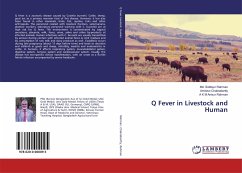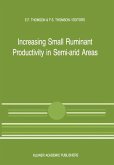Worldwide, the geographical distribution and prevalence of animal and human Q fever are not well established, with only a few countries being affected. The causative agent is an obligate intracellular bacterium called Coxiella burnetii. It is found in two distinct phases I and II. Its development cycle is characterized by the succession of two main forms (LCV and SCV). However, its resistance in the external environment is exceptional. Domestic ruminants are the main reservoir of Q fever and transmission is mainly respiratory. Infection with C. burnetii is usually inapparent. When it is expressed, it is mainly represented by reproductive disorders since it preferentially invades the genital tract. Often a significant amount of bacteria is excreted in parturition products, milk, feces and semen. The choice of protocol for the detection of Q fever depends on the epidemiological situation.
Bitte wählen Sie Ihr Anliegen aus.
Rechnungen
Retourenschein anfordern
Bestellstatus
Storno









